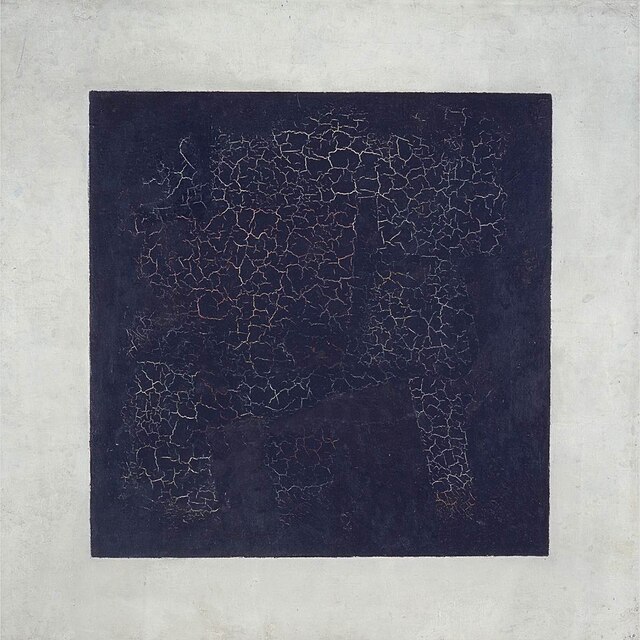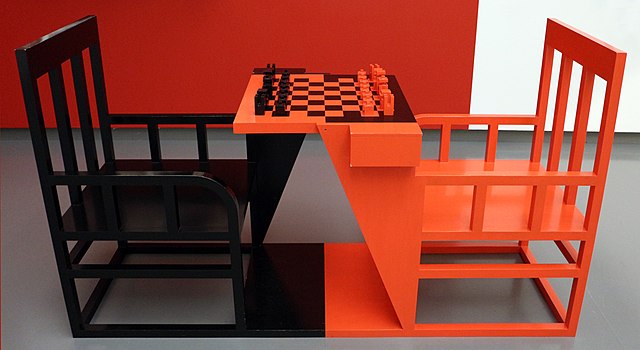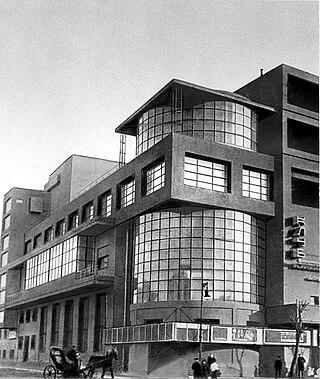Top Qs
Timeline
Chat
Perspective
Russian avant-garde
~1890–1930 Russian and Soviet art movement From Wikipedia, the free encyclopedia
Remove ads
The Russian avant-garde was a large, influential wave of avant-garde modern art that flourished in the Russian Empire and the Soviet Union, approximately from 1890 to 1930—although some have placed its beginning as early as 1850 and its end as late as 1960. The term covers many separate, but inextricably related, art movements that flourished at the time; including Suprematism, Constructivism, Russian Futurism, Cubo-Futurism, Zaum, Imaginism, and Neo-primitivism.[2][3][4][5] In Ukraine, many of the artists who were born, grew up or were active in what is now Belarus and Ukraine (including Kazimir Malevich, Aleksandra Ekster, Vladimir Tatlin, David Burliuk, Alexander Archipenko), are also classified in the Ukrainian avant-garde.[6]








The Russian avant-garde reached its creative and popular height in the period between the Russian Revolution of 1917 and 1932, at which point the ideas of the avant-garde clashed with the newly emerged state-sponsored direction of Socialist Realism.[7]
Remove ads
Influence
The influence of the Russian avant-garde on recent developments in Western art is now undisputed. Without Kazimir Malevich's Black Square on White Background (1915), his later Suprematist composition White on White, Rodchenko's series of Black Pictures (1917/18), and his primary-colored triptych (1921), the evolution of non-representational art by artists such as Yves Klein, Barnett Newman, and Ad Reinhardt would be inconceivable. the same applies, for example, to works of American minimal art by Donald Judd and Carl Andre, which can be traced back to the materiality and functionality of early sculptures by Tatlin and Rodchenko.[8]
The founding of the National Academy of Arts in 1923, promoted by Lunacharsky, and the associated journals were primarily intended to promote exchange with Western countries. This was reflected above all in the establishment of the Soviet pavilion at the Paris Exhibition of Applied Arts in 1925 and in a major exhibition of contemporary French art in Moscow in 1928. The politicized Western art influenced by the Russian avant-garde also had an impact on Russia, as demonstrated by the exhibition of revolutionary art from the West in Moscow in 1926.[9]
Remove ads
Important collections
Exhibition in Chemnitz 2016/17
Under the rubric "Revolutionary! Russian Avant-Garde from the Vladimir Tsarenkov Collection", the Chemnitz Art Collections displayed 400 loans from 110 Russian avant-garde artists from the years 1907 to around 1930 on the occasion of the 100th anniversary of the Russian October Revolution.[10]
Remove ads
Artists and designers
Notable figures from this era include:
- Alexander Archipenko
- Vladimir Baranoff-Rossine
- Alexander Bogomazov
- David Burliuk
- Vladimir Burliuk
- Marc Chagall
- Ilya Chashnik
- Aleksandra Ekster
- Robert Falk
- Moisey Feigin
- Pavel Filonov
- Artur Fonvizin
- Naum Gabo
- Nina Genke-Meller
- Natalia Goncharova
- Elena Guro
- Vasily Kandinsky
- Lazar Khidekel
- Ivan Kliun
- Gustav Klutsis
- Anna Kogan
- Pyotr Konchalovsky
- Eugène Konopatzky
- Sergei Arksentevich Kolyada
- Alexander Kuprin
- Mikhail Larionov
- Aristarkh Lentulov
- El Lissitzky
- Kazimir Malevich
- Paul Mansouroff
- Ilya Mashkov
- Mikhail Matyushin
- Vadim Meller
- Adolf Milman
- Solomon Nikritin
- Alexander Osmerkin
- Max Penson
- Liubov Popova
- Ivan Puni
- Kliment Red'ko
- Alexei Remizov
- Alexander Rodchenko
- Olga Rozanova
- Léopold Survage
- Varvara Stepanova
- Georgii and Vladimir Stenberg
- Vladimir Tatlin
- Nadezhda Udaltsova
- Vasiliy Yermilov
- Ilya Zdanevich
- Alexandr Zhdanov
Journals
Filmmakers
Writers
Theatre directors
Architects
- Yakov Chernikhov
- Moisei Ginzburg
- Ilya Golosov
- Ivan Leonidov
- Konstantin Melnikov
- Vladimir Shukhov
- Alexander Vesnin
Preserving Russian avant-garde architecture has become a real concern for historians, politicians and architects. In 2007, MoMA in New York City, devoted an exhibition to Soviet avant-garde architecture in the postrevolutionary period, featuring photographs by Richard Pare.[11]
Composers
- Samuil Feinberg
- Arthur Lourié
- Mikhail Matyushin
- Nikolai Medtner
- Alexander Mossolov
- Nikolai Myaskovsky
- Nikolai Obukhov
- Gavriil Popov
- Sergei Prokofiev
- Nikolai Roslavets
- Leonid Sabaneyev
- Alexander Scriabin
- Vissarion Shebalin
- Dmitri Shostakovich
Many Russian composers that were interested in avant-garde music became members of the Association for Contemporary Music which was headed by Roslavets.
See also
References
Further reading
External links
Wikiwand - on
Seamless Wikipedia browsing. On steroids.
Remove ads
